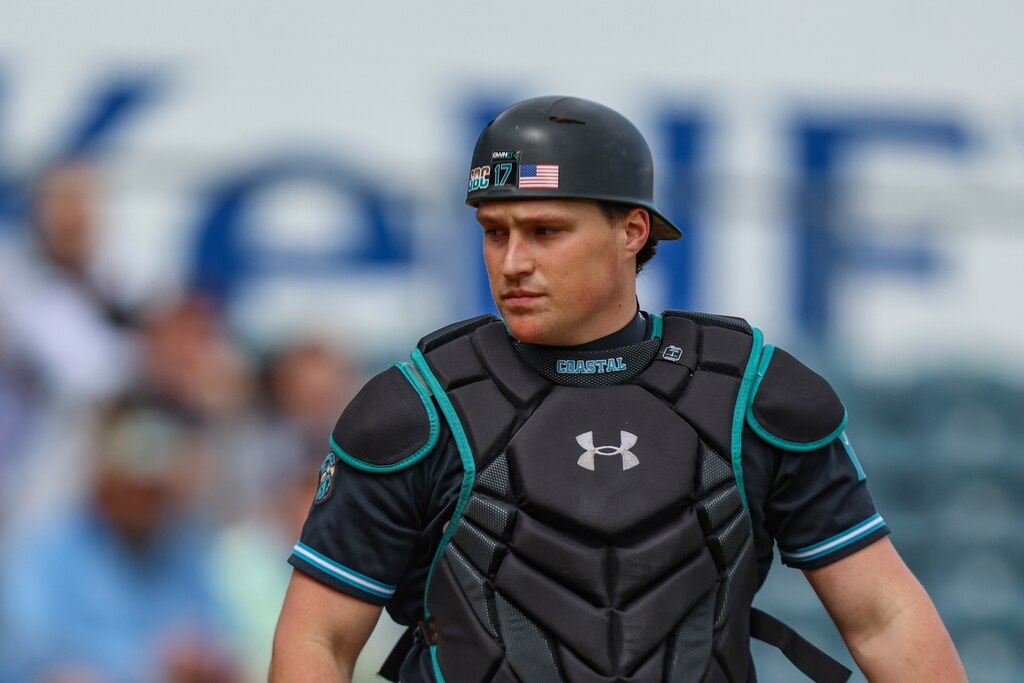The time of year has rolled around once again when the hopes of baseball prodigies and their families around the country lie squarely in the 30 Major League Baseball front offices.
The Orioles bring to the table the largest bonus pool of $19.145 million and seven Day One picks in this year’s MLB draft. All while the team balances precariously on the tightrope between selling and buying players at the trade deadline.
Baltimore’s first pick will be No. 19 overall, and it will be followed by:
- Compensation picks: 30, 31
- Competitive balance picks: 37, 69
- Draft picks: 58, 93
The Orioles picked up two Round A compensation picks, given to teams who lose free agents who signed for more than $50 million, when Corbin Burnes left for the Arizona Diamondbacks and Anthony Santander departed to the Toronto Blue Jays.
As one of the 10 smallest markets in MLB, Baltimore received a competitive balance pick at the end of the second round (69th overall). It acquired another one (37th overall) by trading reliever Bryan Baker to the Tampa Bay Rays.
Historically, Baltimore collects as many college hitters — including Adley Rutschman, Heston Kjerstad, Jordan Westburg, Colton Cowser and last year’s first-rounder, Vance Honeycutt — as it can.
Under general manager Mike Elias, the organization has not taken a pitcher in the first round. However, with so many selections in the top 40, this may be the year it breaks that trend.
Follow along for notes and analysis for the Orioles’ first day of the MLB draft.

First round, pick No. 19: Ike Irish, C/OF, Auburn
Irish, 21, batted .364 and slugged .710 with the Tigers in the Southeastern Conference this year. The team finished the regular season 41-20, earning a No. 4 seed in the NCAA tournament. Auburn advanced to the super regionals but was sent home by Coastal Carolina.
Irish spent the most time as a catcher in the Cape Cod League (a league filled primarily with collegiate players) last year. He batted .325 with an OPS of .871.

Compensation pick, No. 30: Caden Bodine, C, Coastal Carolina
The Orioles have had luck selecting switch-hitting college batters (see Adley Rutschman), and Bodine could be the next in line. Seen as an elite catcher, Bodine is an excellent framer with a track record of getting runners out.
Known for his bat-to-ball skills, Bodine hit .318 during his junior season as he led Coastal Carolina to the College World Series. He struck out just 24 times last season.

Compensation pick, No. 31: Wehiwa Aloy, SS, Arkansas
Aloy was the 2025 SEC player of the year and Golden Spikes winner, the award given to the best amateur player. A right-handed hitter, Aloy hit .350 with 21 home runs for Arkansas last season.
He is a native of Hawaii. There is some question as to whether he’ll stick at shortstop, but his defense has improved throughout his time at Arkansas.
Competitive balance pick, No. 37: Slater de Brun, OF, Summit High School (Bend, Oregon)
Sure, Slater de Brun has drawn comparison to Corbin Carroll, but he’s also a musician and producer who goes by the nickname Lil Slayyy. He bats and throws left-handed and had committed to Vanderbilt before the draft.
In the box, he boasted a .370 batting average and 26 RBIs. But he’s also speedy on the basepaths, snagging 22 stolen bases this year.
Second round, pick No. 58: Joseph Dzierwa, LHP, Michigan State
For the first time in this draft, the Orioles have selected a pitcher: a 6-foot-8 lefty from Michigan State.
Dzierwa has been the ace for the Spartans since his freshman year. He ended this season at the Big Ten school with a 2.36 ERA over 91 2/3 innings. His fastball averages 90-93 mph and maxes out at 95, however, his secondary pitches need work.
This year, he gave up 68 hits and 31 earned runs, though his WHIP was 0.982 (a great WHIP is anything below 1.10).
Competitive balance pick, No. 69: JT Quinn, RHP, University of Georgia
Quinn has played three years at SEC schools, transferring from Ole Miss to Georgia this year. He had a rough sophomore year, pitching 19 1/3 innings as a reliever. His ERA shot up to 12.57.
This season, though, he had a 3.25 ERA as a starter in Georgia and a 3.86 mark in three games in the Cape Cod League.
His command and control leave a bit to be desired, but his fastball, which usually sits around 95 mph, has the potential to reach 98.
Third round, pick No. 93: RJ Austin, OF, Vanderbilt
At first glimpse, Austin’s year at Vanderbilt wasn’t pretty. He batted .257, slugging .383 with an OPS of .736. And, though he only hit two homers this season in the SEC, Baltimore fans can find some hope in years prior.
His batting average increases to .335 when looking at last year, when he also slugged .471. He also played in the Cape Cod League, where his batting average was .321.
He also boasts speed. He had 15 doubles and four triples this season, and he stole 22 bases.
This article has been updated.





Comments
Welcome to The Banner's subscriber-only commenting community. Please review our community guidelines.